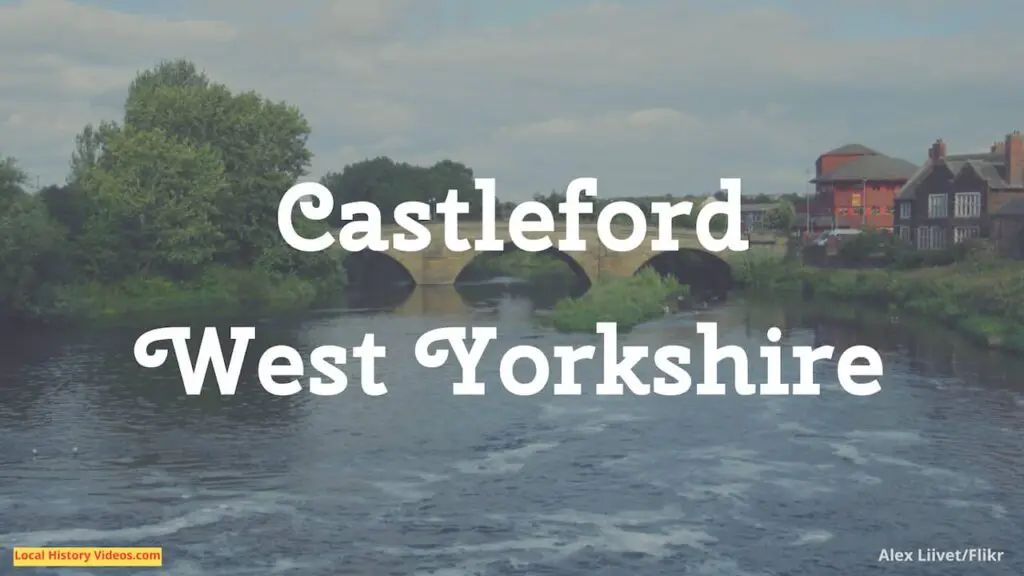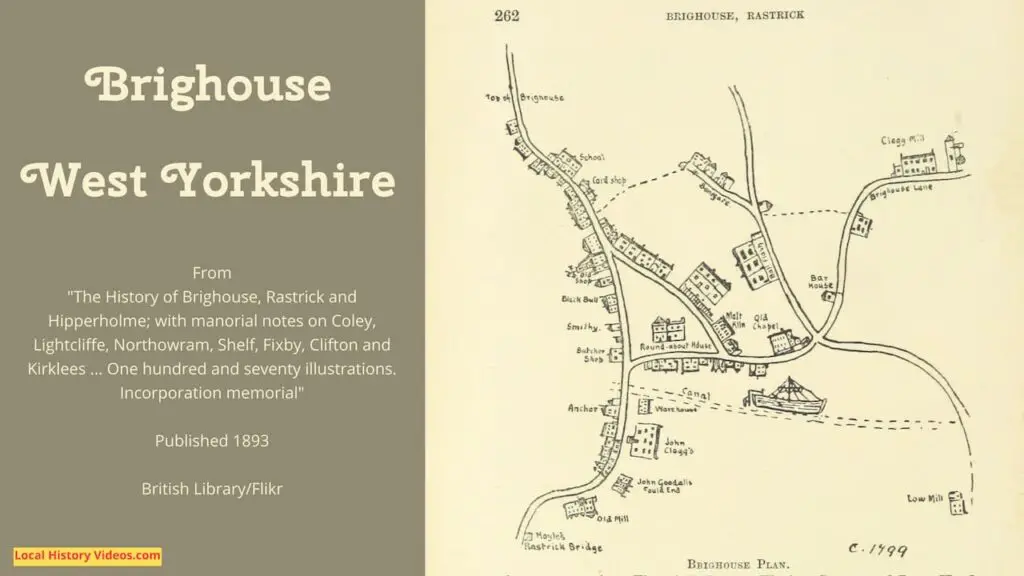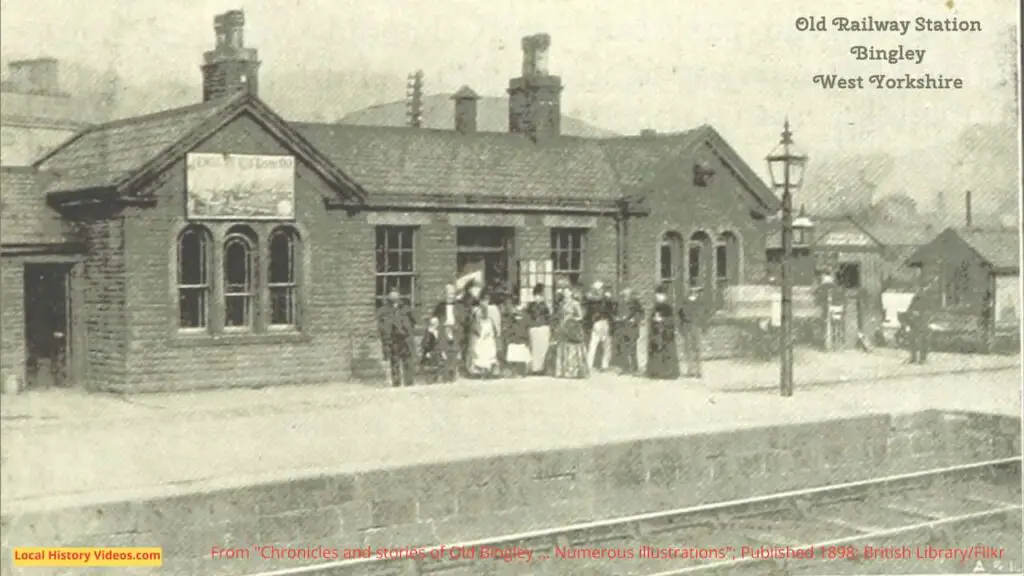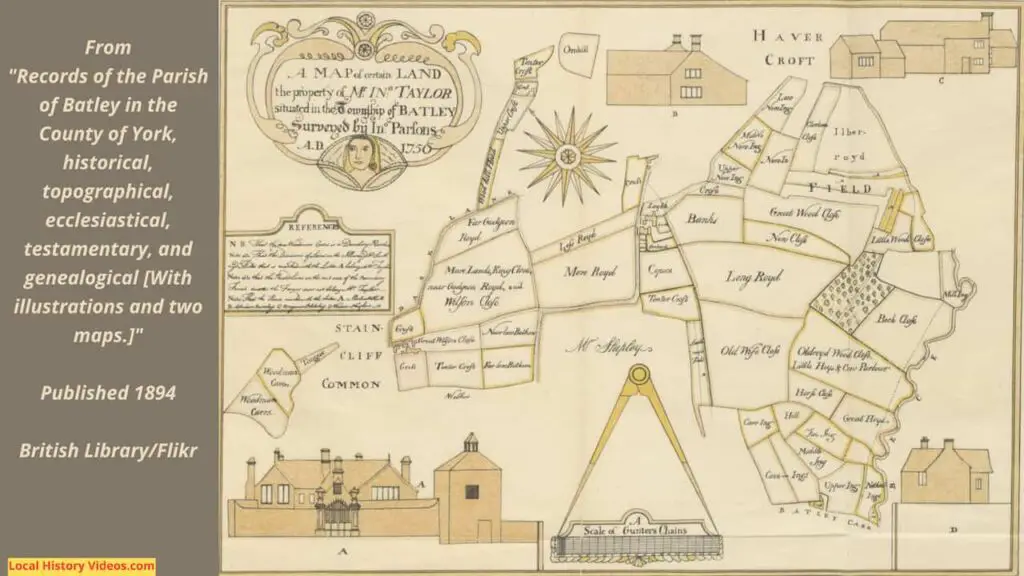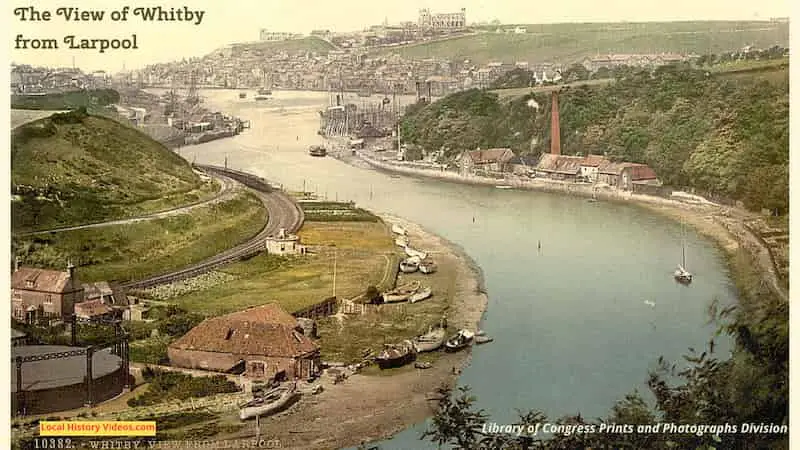Enjoy a glimpse of history through old images of Bradford, in West Yorkshire, England, UK.
Bradford in West Yorkshire was famous for its wool and textile industry, which saw its population boom from 13,000 people in 1800 to over 100,000 in 1850.
In the second half of the 20th Century, the local economy attracted many workers from countries such as Pakistan. Today the city’s eateries have a reputation for some of the finest Asian food in the UK.
Bradford In World War I
Women Munitions Workers In Bradford 1914-1918
This is a quick look at the world of the female munitions workers during the Great War, which later became known as World War I.
When the young men went away to fight in the trenches and foreign lands, it was up to the female workforce to keep production going, including in the munitions factories.
This is a short, silent black and white film recorded during the First World War.
In Bradford, a woman works at a machine.
She wears an apron over her long skirt, and a baggy white blouse with the sleeves rolled up. Her hair is tied back under a close fitting cap, and she has a dark necktie on.
It looks skilled work, and she shows the completed munition to the camera.
Next we see the dining hall, full of women. They seem to have between two and four women to each table.
In front of them are gleaming white cups and saucers, presumably for tea. On white plates are what appears to be a piece of cake.
There’s a lot of laughter and joy in the room as they chatter to each other.
King George V & Queen Mary Visit Bradford In 1918
The Royal visit in 1918 records more than the visitors and the crowds who turned out to cheer for them. We also glimpse some of the local streets, and get to see women working in a local textile factory.
Crowds line the city centre streets of Bradford and groups of people lean out of the windows of flats above. Several flags are seen, and the policemen keep the spectators safely on the pavement.
A procession of cars and a motorbike drive along the road before turning right just in front of the camera.
Next King George V, in uniform, walks along with a smartly dressed gentleman. Another man in uniform follows closely behind. The King briefly nods twice to the line of people excitedly standing clapping.
Queen Mary now follows, surrounded by a collection of gentlemen. She’s further away from the clapping staff, but looks over to nod.
Then a procession of men take turns to step forward, shake hands with the King, shake hands with the Queen, and move away.
Next, there’s another car ride. This time the buildings are smaller, and there’s the backdrop of the countryside behind. But people line the street as far as you can see, many waving small flags.
Now the King walks down the aisle of a textile factory. Row upon row of women diligently work at their station on the cloth in front of them, as the King talks to the suited gentlemen with him.
The 1940s
Prime Minister Churchill speaks at Bradford Town Hall (1942)
Churchill brought members of his family and his cabinet along for his trip to the city, which included a speech outside the Town Hall.
The event brought out an impressive number of spectators, especially when you consider this was during the middle of a world war.
In this 1942 Gaumont British News reel titled “Mr. Churchill Speaks of Good News”, the wartime Prime Minister Winston Churchil visits a number of locations in Bradford. It’s at the end of November 1942, or early December 1942.
It opens with the Prime Minister, Sir Winston Leonard Spencer-Churchill, KG, OM, CH, TD, FRS, PC, (1874-1965), driven along in an open top car through the city centre to the Town Hall.
He tips his hat to the large crowds gathered in the city centre streets. A lot of cheering is heard in the background.
He was accompanied by Mr Ernest Bevin (1881-1951), a Labour politician who was Minister of Labour and National Service in Churchill’s all-party coalition government.
The Air Minister is there too. Archibald Sinclair, 1st Viscount Thurso (22 October 1890 – 15 June 1970) was the Leader of the Liberal Party and Secretary of State for Air from 11 May 1940 until 23 May 1945.
Also with Mr Churchill is his wife Clementine Ogilvy Spencer-Churchill, Baroness Spencer-Churchill, GBE, CStJ (nee Hozier; 1885-1977). She wears a fur coat with broad shoulders.
Their daughter Mary is also present. Despite being married to Christopher Soames, Mary was at this time a Second Subaltern in the ATS. Therefore she is wearing her ATS uniform at this event.
On a podium outside Bradford Town Hall, Mr Churchill gives a speech. The assembled crowd is large and the street is closed to traffic, although you can see some vehicles heading in a different direction in the background.
Mr Churchill says November is usually a month of fogs and gloom, but it’s been a better month than others during the course of this ‘unpleasantness’ (World War II).
He says the military has been doing well. Plus, “our gallant Russian ally has struck redoubtable blows against our common enemy”.
Russia had switched to the allies side on 22 June 1941, when Hitler broke the Molotov-Ribbentrop Pact by invading the Soviet Union.
Motorcycle Scramble At Bradford Pottery Fields (1947)
It’s 1947 and the war has ended, even if petrol rations haven’t. But splashing about in muddy ditches on a motorbike is more than fun for a few lads, it’s an attraction drawing spectators from across Yorkshire.
The Second World War is barely over and many goods are still rationed. But young people still want to enjoy their leisure time!
Mud, engine noise, ditches and rough country was the perfect day out for the Vagabonds Motor Club.
Here at the Pottery Fields near Bradford, a sizeable audience from all over Yorkshire turns out to watch the fun. You can also hear them calling out encouragement to the racing participants.
The narrator refers to “Indian Summer weather”, so this was probably September 1947.
At the end, the narrator states that it may be some time until the next motorbike scramble, because of the basic petrol cuts now operating.
The 1960s
Smallpox Crisis In Bradford (1962)
It’s an event that dropped out of the national collective memory surprisingly early, but in the 1960s this city was the epicentre of a smallpox outbreak.
Not surprisingly, people turned out in their hundreds of thousands to get vaccinated.
Dramatic music opens this 1962 newsreel, and no wonder.
Isolated smallpox cases did crop up from time to time, usually in people arriving in England from South East Asia. But this was a terrifying outbreak, and could have been so much worse.
How Did Bradford Get A Smallpox Outbreak?
Vaccinations stopped being compulsory in Britain in 1948. As a result, by the early 1960s millions of UK citizens had no protection against highly infectious and serious diseases such as smallpox.
According to the memories of medical eyewitness Derrick Tovey, FRCOG FRCPath, described in the Journal of the Royal Society of Medicine (JRSM), the main events of the Bradford Smallpox Outbreak of 1962 are:
16 December 1961
A 5 year old girl with unidentified smallpox (and who had been twice vaccinated against it) arrives from Karachi, Pakistan. She’s then treated for malaria at the Children’s Hospital in Bradford.
19 December 1961
A man arrives from Pakistan. He falls ill, and it’s later a suspected smallpox case.
25 December 1961
A 24-year-old man arrives at Heathrow Airport in London. His suspected smallpox is later confirmed.
30 December 1961
The 5 year old girl child in the Children’s Hospital sadly dies. A post mortem takes place by a pathologist who has not been immunised against smallpox.
11 January 1962
The St Luke’s pathology team receive a blood test for processing. The patient is a seriously ill man whose child was in the Children’s Hospital. By the time his blood sample arrived at St Luke’s, the patient had already died.
11 January 1962
A cook at the Children’s Hospital in Bradford is admitted to the local fever hospital with severe viral disease.
Over The Next 5 Days
In the following 48 hours, the St Luke’s team identified the possible disease, organised blood tests and successfully called for the emergency senior health management response.
Seven children at the Children’s Hospital were identified with early stage symptoms of smallpox. One of them had been transferred to the convalescent hospital at Wharfedale.
The pathologist who undertook the child’s post mortem on 30 December fell ill and died.
It was established that St Luke’s, Bradford Royal, the Children’s Hospital and the fever hospital were all infected, so the buildings immediately closed.
The isolation hospital at Oakwell was designated to receive all smallpox cases.
Within five days of the smallpox discovery, 285 000 babies, adults and children were vaccinated. In addition, over a thousand contacts were quickly traced.
Meanwhile, resident doctors were forbidden to leave hospital premises, though there were isolated cases of medical staff travelling out of the area.
The Newsreel About The Smallpox Crisis
The newsreel opens with scenes of the busy streets of Bradford. The newspaper headline is about Smallpox.
The narrator tells us that the Pakistani community is 8,000 strong in a city of 300,000 people. Images of local Pakistani people and businesses are briefly shown.
By this point, the disease is known to have killed six people.
Now we see the long line of people waiting for their vaccination. It’s raining, so many people have umbrellas up. One lady carries a swaddled baby in her arms.
Already, 100,000 people have been vaccinated at emergency clinics, and the vaccine for a further 100,000 has arrived.
At St Luke’s hospital, all parcels must be left with the attendants at the gate house. (As a side note, it’s nice to see errors in apostrophe use aren’t just a modern issue).
Bradford’s Medical Officer of Health, Dr. Douglas, sits working at a desk.
At the Town Hall, there’s an even longer queue of people waiting for their vaccination. It goes around at least two sides of the building.
Vaccination Risks In 1962
It wasn’t just Bradford at risk of a smallpox outbreak. Therefore, people across the country rushed to get vaccinated, overcoming their fears of the vaccination risks.
It’s worth mentioning something that isn’t discussed in the newsreel, which is that vaccinations in the early 1960s had a small but present risk. As a result of the smallpox vaccination campaign of 1962, a small number of deaths occurred. One included a baby who wasn’t vaccinated because of nappy rash, but bathed in the same water as an older sibling who had been vaccinated that day.
New Arrivals
Next the footage shows 87 Pakistani immigrants arriving at London Airport. Most are young men. It’s daunting to move countries under the best circumstances, so coming into Britain at this time must have been a stressful experience for them.
The narrator states 5 of this group had no vaccination certificates, and so were vaccinated at once.
Between November 1961 and the date of this newsreel, 267 people had died of smallpox in Pakistan.
No Social Distancing!
In the era of the 2020 pandemic, it’s strange to see Britain in the grip of a highly contagious epidemic where social distancing and masks are completely absent from every scene.
In particular, people in queues press together, and the vaccination rooms are packed with people. Adults, children, toddlers and babies all have close physical and aerosol contact with the people and strangers around them.
Thankfully, the medical professionals at St Luke’s quickly identified the problem; moreover, the management response was through and effective.
More Pictures of Old Bradford
Old Bradford in West Yorkshire, England, enjoyed through historic photos, vintage pictures & archive film. Browse history in these fascinating old images of a bygone era on my Pinterest board.
Bradford’s History On Facebook
Many groups, societies and history enthusiasts are active on Facebook pages and groups. If you want to find out more about the local area, it’s easy to join one of the following Facebook communities:
Old photos of Bradford
MEMORIES OF BRADFORD
Bradford Family History Society Public Group
Bradford Historical & Antiquarian Society


